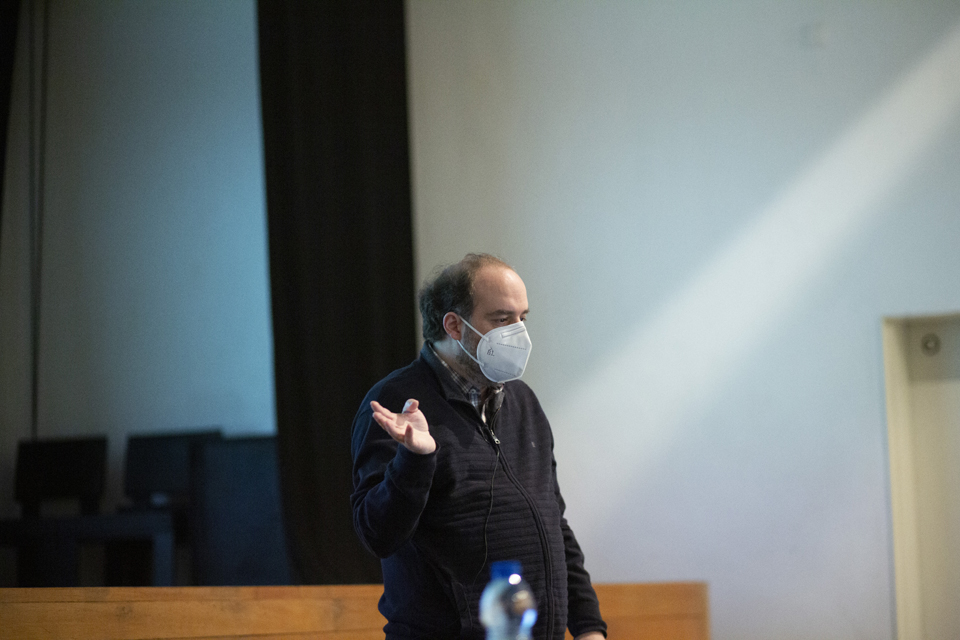
What sounds in “sound art”? – Nuno Fonseca – Open Class
In the first decades of the 21st century, expressions such as “Sound Art”, “Klangkunst”, “Sonic arts” or even “Sounding art”, among others that usually place sound or the experience of sound at the centre of art-making, have been recurrently used both in academic discourse and in the art world, despite the theoretical controversies and, at times, the resistance of the artists themselves, to designate what is, in fact, a diverse set of contemporary artistic practices that frequently intersect with other disciplines (from in situ installation to soundwalk, sound sculpture or musical experimentation and performance). These practices were not, however, born in this century, having a complex genealogy that goes back at least to the avant-garde of the beginning of the 20th century and whose branches intersect the histories of music, technology, fine arts, cinema and several transformations in the very aesthetic, social and political sensibility of the contemporary era. The convocation of some moments and some pieces of this complex genealogy will certainly help to clarify the problems, notions and specificities that those designations intend to address.
We therefore propose to reflect on what is at stake in these “sound arts”, namely the possibility of “sound in itself” becoming the plastic material or the medium of certain artistic practices, but also of the sound experience, audibility and the issues of listening and resonance (social, political and even ecological) serving as principles of semantic, expressive and imaginative inspiration for a non-cochlear sound art. The works of artists such as Max Neuhaus, Christina Kubisch, Christian Marclay, Jana Winderen and Christine Sun Kim will serve as foghorns for this exercise.
Nuno Fonseca (born 1974) is a research fellow at the Instituto de Filosofia da Nova (Ifilnova), where he coordinates the workgroup Arte, Crítica e Experiência Estética of the Culturelab, and an associate member of the Centro de Estudos de Sociologia e Estética Musical (CESEM). He investigates various topics in Aesthetics and Philosophy of Art, focusing mainly on sound and sonic experience in the context of contemporary artistic and musical practices, but also in the context of urban everyday life. He has taught, at the Faculdade de Ciências Sociais e Humanas of the Universidade NOVA de Lisboa, the class on “Rhetoric and Argumentation” (2012-2014), in the Communication Sciences course, the seminar “Art and Experience” (2012-2013), in the Aesthetics MA, the semester course “Urban Aesthetics: Philosophy, Art and the City” (2020-2021) and several short courses on the Philosophy of Sounds and Sound Arts (2015-2018), Logic, Aesthetics and Epistemology (2018-2021). Graduated in Law (1998) and Philosophy (2004) at the Universidade de Coimbra, he completed his PhD in Philosophy (Epistemology and Philosophy of Knowledge) at FCSH-UNL in 2012, working on issues of representation and perception. In addition to several articles and chapters published nationally and internationally, he is also the author of the first full Portuguese translation and edition of Port-Royal’s Logic, published by the Calouste Gulbenkian Foundation. Since the 90s, connected to experiments with the sound medium, namely by conducting radio programs at Rádio Universidade de Coimbra and more recently at Antena 2, he has also made some incursions in the sound design of theatre and performance shows, namely, Antológica (2014), by Vasco Araújo and Teatro Cão Solteiro and Morceau de Bravoure (2015), a performance of Teatro Cão Solteiro with the Companhia Nacional de Bailado.




